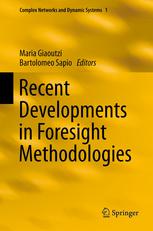

Most ebook files are in PDF format, so you can easily read them using various software such as Foxit Reader or directly on the Google Chrome browser.
Some ebook files are released by publishers in other formats such as .awz, .mobi, .epub, .fb2, etc. You may need to install specific software to read these formats on mobile/PC, such as Calibre.
Please read the tutorial at this link: https://ebookbell.com/faq
We offer FREE conversion to the popular formats you request; however, this may take some time. Therefore, right after payment, please email us, and we will try to provide the service as quickly as possible.
For some exceptional file formats or broken links (if any), please refrain from opening any disputes. Instead, email us first, and we will try to assist within a maximum of 6 hours.
EbookBell Team

4.4
42 reviewsForesight is an area within Futures Studies that focuses on critical thinking concerning long term developments, whether within the public sector or in industry and management, and is something of a sub-section of complexity and network science. This book examines developments in foresight methodologies and relates in its greater part to the work done in the context of the COSTA22 network of the EU on Foresight Methodologies. Foresight is a professional practice that supports significant decisions, and as such it needs to be more assured of its claims to knowledge (methodology). Foresight is practiced across many domains and is not the preserve of specialized ‘futurists’, or indeed of foresight specialists. However, the disciplines of foresight are not well articulated or disseminated across domains, leading to re-inventions and practice that does not make best use of experience in other domains.
The methodological development of foresight is an important task that aims at strengthening the pool of the tools available for application, thereby empowering the actors involved in foresight practice. Elaborating further on methodological issues, such as those presented in the present book, enables the actors involved in foresight to begin to critique current practice from this perspective and, thirdly, to begin to design foresight practice. The present trends towards methodological concerns indicates a move from ‘given’ expert-predicted futures to one in which futures are nurtured through a dialogue among “stakeholders.” The book has four parts, each elaborating on a set of aspects of foresight methodologies. After an introductory section, Part II considers theorizing about foresight methodologies. Part III covers system content issues, and Part IV presents foresight tools and approaches.